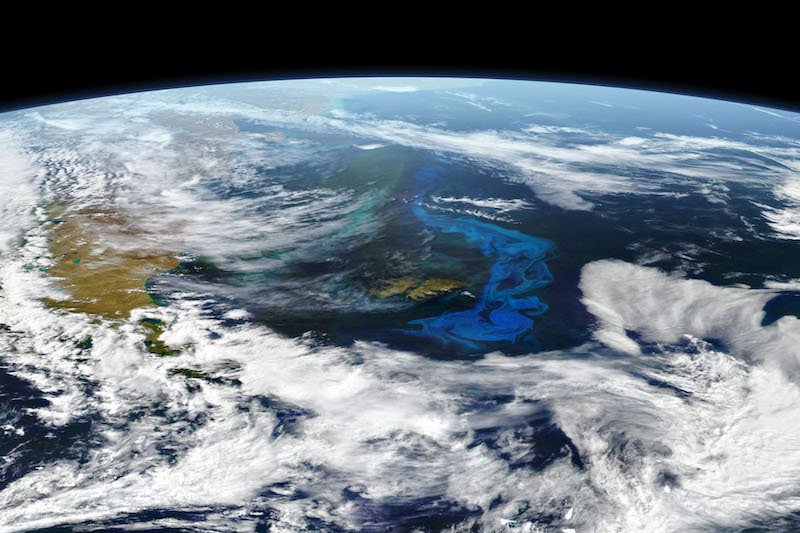Phytoplankton Power
Science and Creation
A new study confirms there is power in numbers. Marine phytoplankton in the Southern Ocean may be small, but they’re mighty. These tiny, single-celled protists contain chlorophyll, allowing them to absorb energy from sunlight. They abound in Antarctic waters, in numbers far greater than in northern seas because of less human influence in those areas. But for being so small, the phytoplankton have a big influence—you might say as big as the sky. In their vast numbers, the phytoplankton generate more clouds overhead and even contribute to their white brilliance.
Using NASA satellite data and ocean biology models, scientists monitored the skies over the Southern Ocean, one of the cloudiest places on earth. They found that the marine phytoplankton produce a compound called dimethyl sulfide. This aerosol compound attracts water droplets in the atmosphere, and these particles collect to create clouds. Clouds containing more liquid and bigger droplets reflect more sunlight. With a larger surface area, whiter clouds deflect more heat from our atmosphere and help keep earth cool.

A phytoplankton bloom—visible from space—appears between Antarctica and the tip of South America.
Photo by NASA Earth Observatory
Even in a fallen world, we see how God has arranged everything to work together in an orderly—and brilliant—fashion. The tiniest organisms have a part to play in God’s creation. Small wonder!
Answers Magazine
January–March 2024
As God’s special creation, humans possess the gift of language—but animals also have something to say!
Browse IssueRecommended Resources

Answers in Genesis is an apologetics ministry, dedicated to helping Christians defend their faith and proclaim the good news of Jesus Christ.
- Customer Service 800.778.3390
- Available Monday–Friday | 9 AM–5 PM ET
- © 2025 Answers in Genesis





